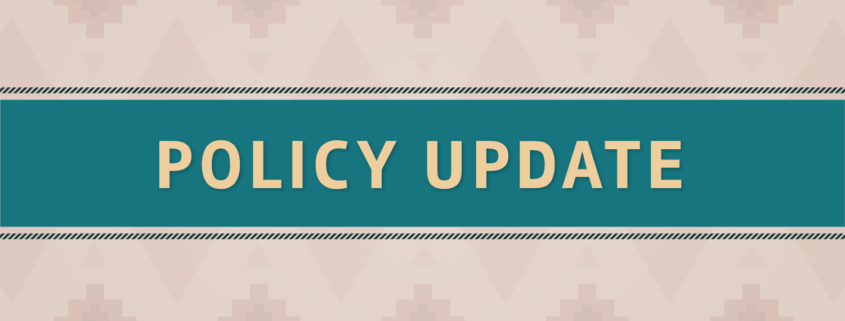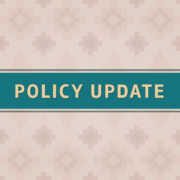New IHS/VA Map Tool Connects Native Veterans to Healthcare and Support Services Nationwide, Including at Urban Indian Organizations
The Department of Veterans Affairs (VA) and the Indian Health Service (IHS) launched an interagency map tool, called Find Health Care & Resources for Native Veterans, to make healthcare more accessible for American Indian and Alaska Native (AI/AN) veterans. This map hosts location data from 41 urban Indian organizations (UIOs) with 82 locations and 1,500 VA healthcare facilities and is an easy way for AI/AN veterans to find health and support services ranging from dental care centers to substance abuse help. The tool also identifies resources to address homelessness and was developed as a part of the Native American Veteran Homelessness Initiative whose goal, in partnership with UIOs, is to provide education on resources from the VA and IHS and to encourage Native veterans to access those services. Ending veteran homelessness was labeled as a top priority of the Biden administration. In accordance with this, the tool labels as many Veterans Health Administration (VHA) sites as possible, usable by all Native and non-Native veterans. The map helps Native veterans from around the country get connected to services they need and deserve.
Background
Native Veteran Disparities
Native Americans have served for the United States military at higher rates than any other group in almost every armed conflict in the nation’s history. However, Native veterans face significantly higher disparities once transitioned back to civilian life. For example, Native veterans are more likely to be uninsured and have a service-connected disability than other veterans. Urban Native veterans generally have lower incomes, higher unemployment, lower education attainment, higher VA-service connected disability, and generally live in poorer housing conditions than non-Native urban veterans. The National Council of Urban Indian Health (NCUIH) estimates that there are about 8 Native veterans experiencing homelessness per 1000 veterans, compared to about 1.5 white veterans per 1000 veterans. Urban Native veterans are greatly impacted by this, as NCUIH estimates that 86.2% of the veteran population identifying as Native lives in urban areas. Homelessness is a key Social Determinant of Health and a lack of stable housing can lead to an increased risk of premature death, preterm delivery, exposure to disease vectors like vermin, and other negative health impacts.
NCUIH and the VA
NCUIH has highlighted in several written comments to the VA and in meetings with agency representatives, the need for the VA to address and provide services to Native veterans living in urban areas. VA data currently indicates that Native veterans use VA benefits or services at a lower percentage than other veterans. To address these disparities, NCUIH has provided the VA with several recommendations and administrative guidance on how to improve Native veteran health through collaboration with the VA. This map tool will also help eligible AI/AN veterans access VA health care, where they are no longer required to make copayments for health care and urgent care. For years, NCUIH has worked to remove copayment barriers for AI/AN veterans at the VA and recently provided comments to the VA’s Proposed Rule on the Copayment Exemption for AI/AN Veterans and was successful in getting the agency to remove a proposed cap on the amount of urgent care visits which qualify for the exemption. Current eligibility for the copay exemption is available to AI/AN Veterans who met the definition of “Indian” or “urban Indian” under the Indian Health Care Improvement Act.
NCUIH is also working to address homelessness among urban Native veterans and works closely with the VA, Department of Health and Human Services (HHS), Housing and Urban Development (HUD), and the White House Committee on Native American Affairs on the implementation of the interagency Native American Veteran Homelessness Initiative. Sonya Tetnowski (Makah), Chair of Veterans Health Administration Subcommittee within the VA Advisory Committee on Tribal and Indian Affairs Committee, Army veteran, NCUIH President, and CEO of the Indian Health Center for Santa Clara Valley, highlighted the importance of looking at the whole person and making sure that their needs are being met during a Committee meeting in January. She also brought forth potential subcommittees, including unhoused urban Veterans, Native Healer utilization, and Behavioral Health and Substance Use. On August 17, 2022, the Committee held a meeting where Ms. Tetnowski presented five priority areas, including homelessness and housing as a priority. In addition, NCUIH submitted comments to HUD, encouraging the agency to incorporate urban Natives in its FY22-26 Strategic Plan and focus areas. HUD provides housing resources and funding for Tribes, but these resources are very limited when it comes to urban AI/ANs, or not applicable at all. These efforts have emphasized the critical importance of working with UIOs to reach and serve the significant portion of Native veterans living in urban areas.
- President Announces Interagency Initiative to Address Homelessness for Urban Native Veterans (December 9, 2022)
- VA Approves Copay Exemption for American Indian and Alaska Native Veterans (May 11, 2023)






Leave a Reply
Want to join the discussion?Feel free to contribute!